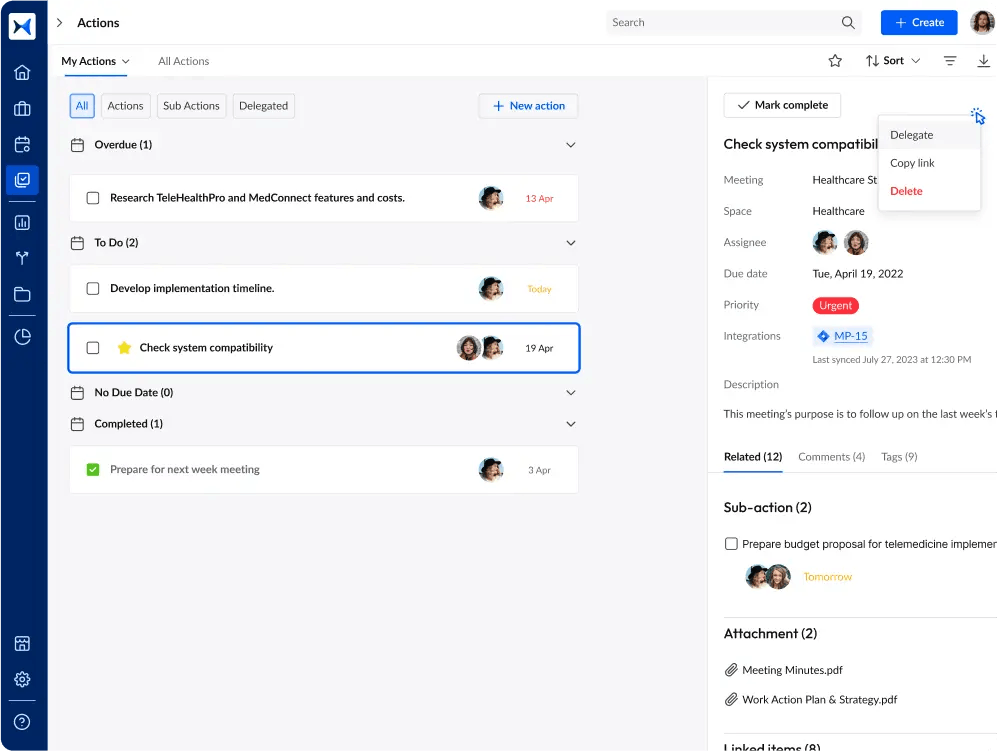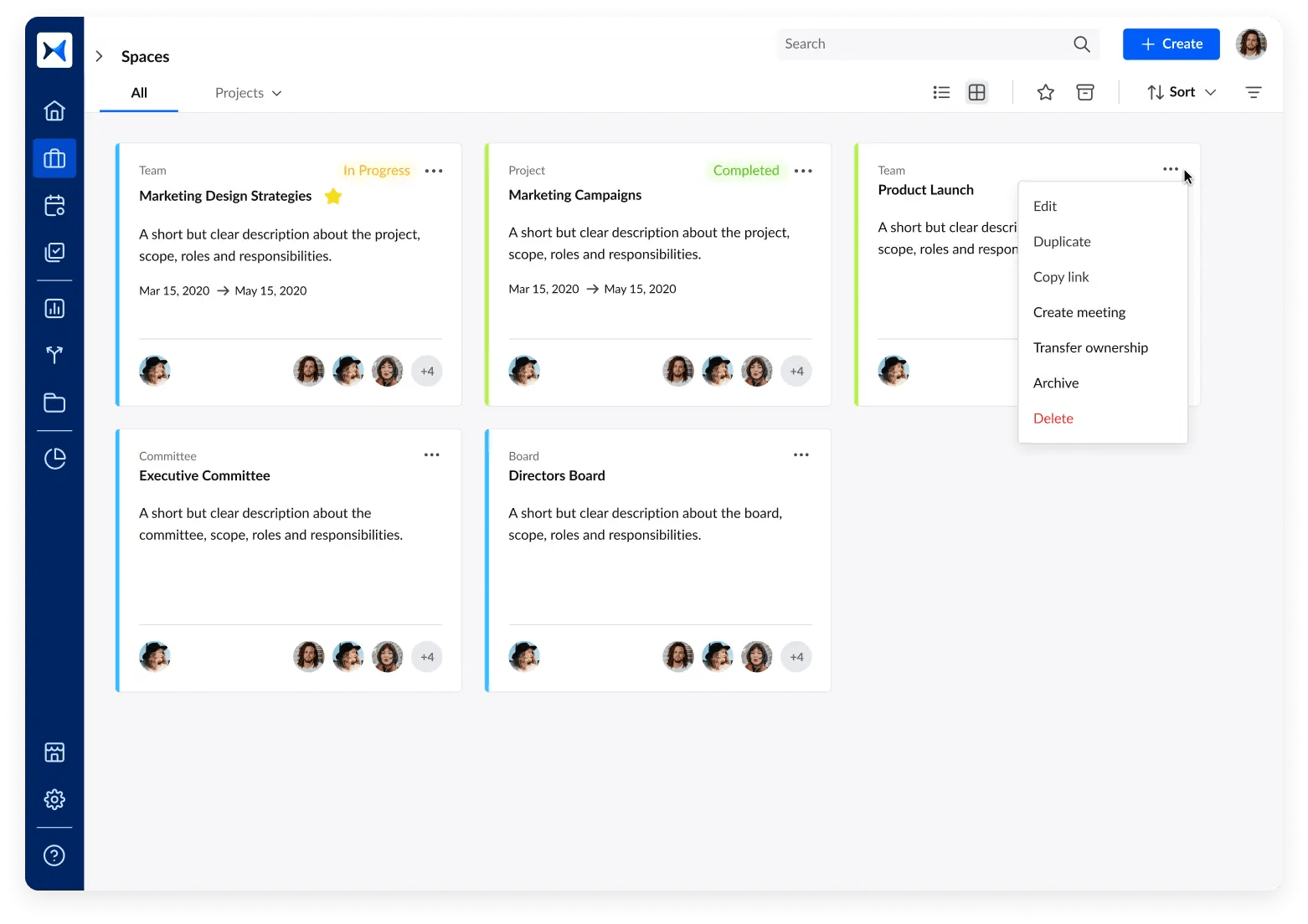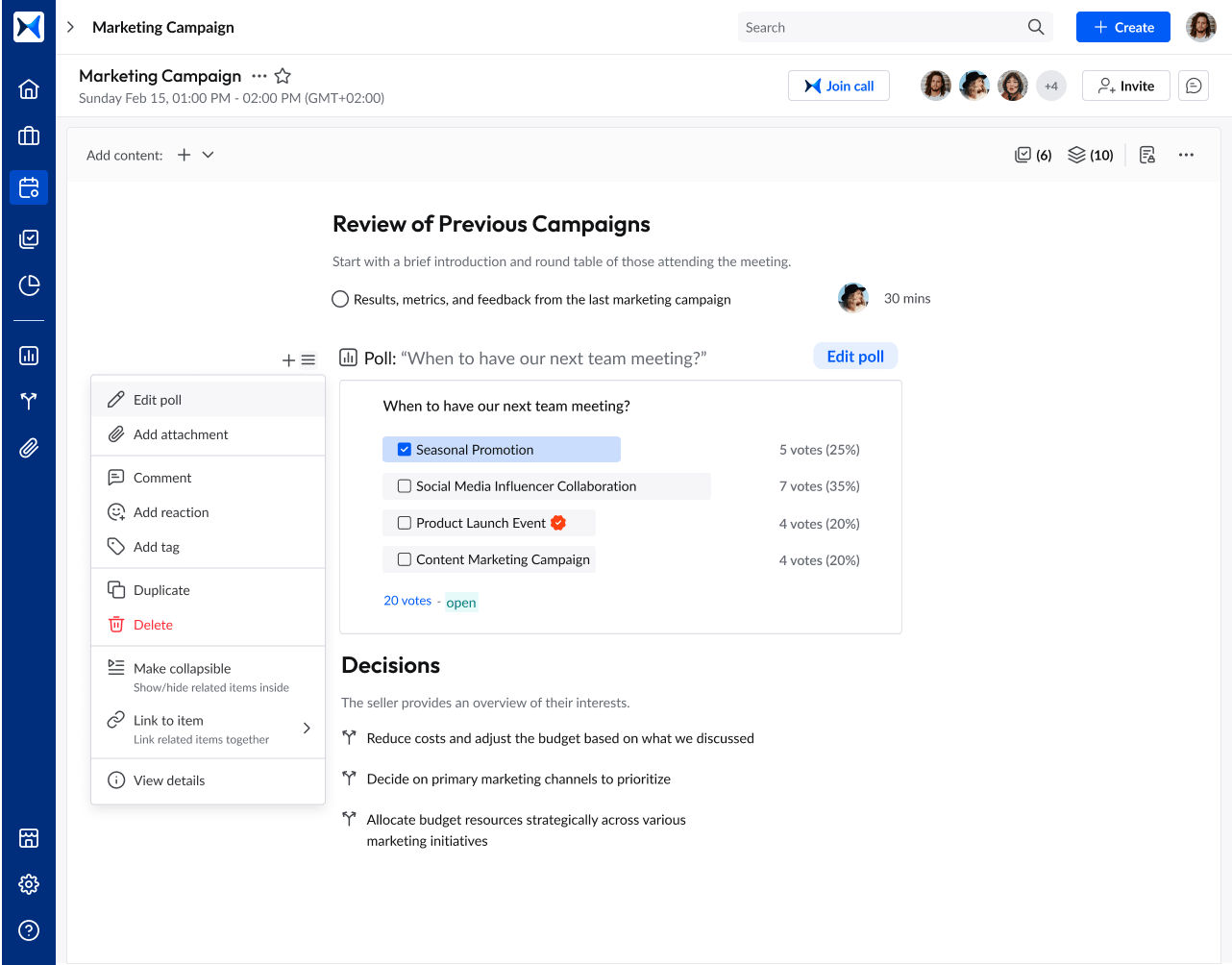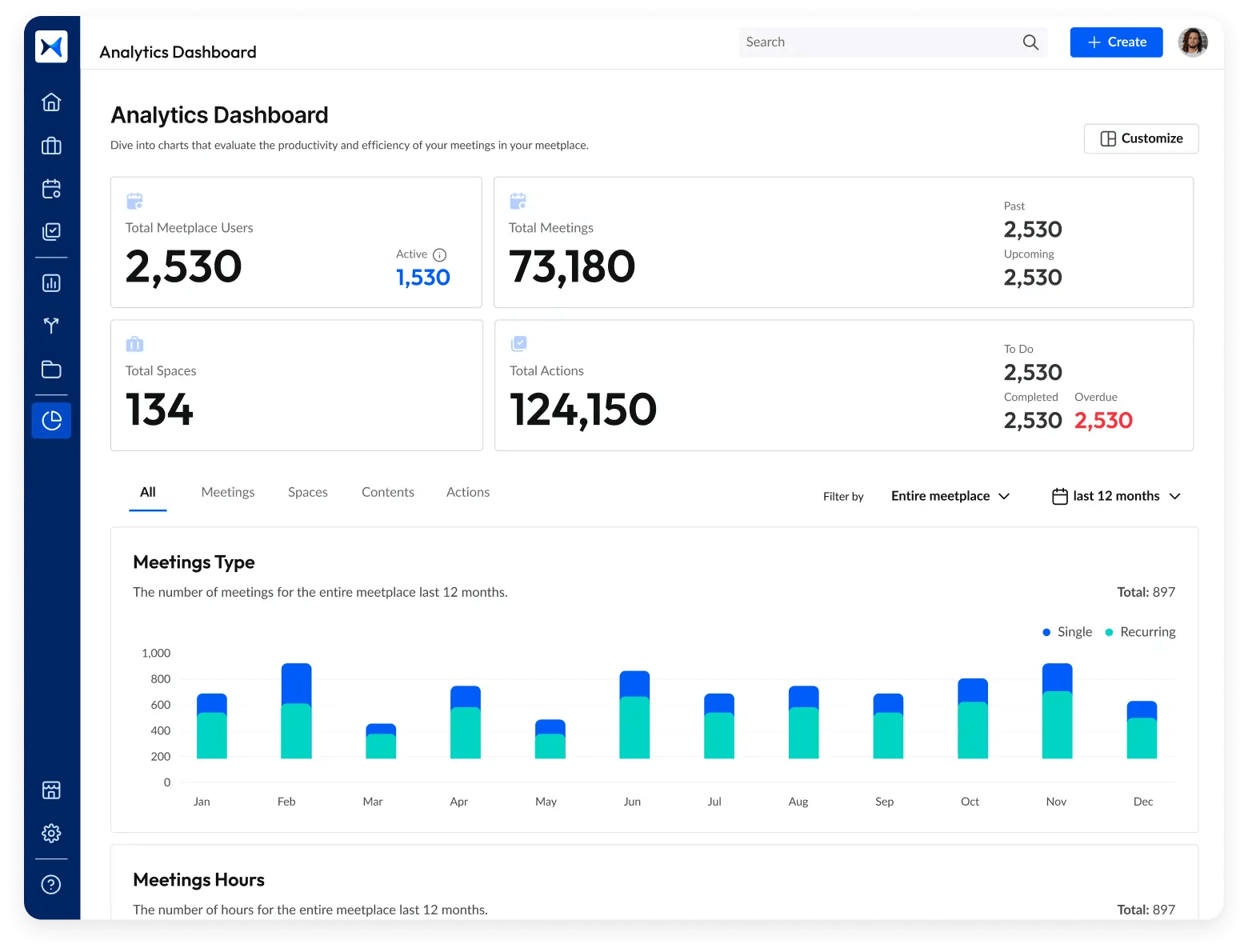August 26, 2024 · 11 min read
Building Leadership from Within: The Nominating Committee’s Role

Shaimaa Badawi

A nominating committee holds the key to shaping the future of an organization by selecting its leadership. The success of this committee directly impacts the direction, governance, and strategic goals of the company. But what makes a nominating committee truly effective? Dive into this guide to uncover the best practices, challenges, and key strategies that can elevate your nominating committee to new heights of effectiveness and efficiency.
What is a nominating committee?
A nominating committee is a specialized group within an organization tasked with identifying, evaluating, and recommending candidates for key board or executive positions. Its primary role is to ensure that the individuals selected possess the necessary skills, experience, and qualifications to contribute effectively to the organization’s governance and strategic goals. The committee operates with a focus on maintaining high standards of leadership, ensuring the board remains diverse, capable, and aligned with the organization's values and long-term vision.
What is the role of the nominating committee?
The nominating committee plays a pivotal role in shaping an organization’s leadership by ensuring the selection of board members and senior executives aligns with the long-term vision and strategy of the organization. Their primary responsibilities revolve around several core areas:
1. Identifying and recruiting leadership
The committee is responsible for identifying individuals who possess the right blend of skills, experience, and values to serve in key leadership positions. This goes beyond filling vacancies; it’s about proactively seeking out candidates who can contribute to the future success of the organization. The nominating committee’s goal is to maintain a well-rounded board that’s capable of addressing current challenges and driving future growth.
2. Succession planning
A key function of the nominating committee is to ensure continuity in leadership by planning for succession well in advance. This involves assessing potential leadership gaps and preparing for transitions, particularly when board members or senior executives step down. By doing so, the committee helps avoid disruptions in governance or strategy execution.
3. Evaluating board effectiveness
To ensure that the board is functioning at its highest potential, the nominating committee conducts regular assessments of both individual members and the board as a whole. This evaluation focuses on how well the board’s performance aligns with the organization’s strategic objectives, and identifies areas for improvement or adjustment.
4. Onboarding and development
Once new members are appointed, the nominating committee oversees their orientation and ongoing development. This includes introducing them to the organization’s strategic goals, culture, and governance processes. The committee ensures that new members are well-prepared to contribute effectively from the outset and that all members continue to grow in their roles.
5. Ensuring diversity and good governance
The nominating committee also ensures that the board reflects a diverse mix of perspectives, skills, and backgrounds, contributing to more robust decision-making. Additionally, the committee monitors and advises on governance practices, making sure the organization adheres to legal and ethical standards while fostering an inclusive and forward-thinking leadership team.
What is the function of a nominating committee member?
A nominating committee member plays a crucial role in shaping the leadership and direction of an organization. Here's a closer look at their key functions:
1. Assessing leadership needs
A nominating committee member helps evaluate the current leadership structure and identifies gaps in skills or expertise. They ensure that the board remains diverse and capable of addressing future challenges while keeping aligned with the organization’s strategic goals.
2. Identifying and recruiting candidates
Committee members actively search for potential candidates, drawing on their networks and insights to find individuals who align with the organization's mission and values. They evaluate candidates’ backgrounds and competencies to ensure a strong fit with the board’s overall composition.
3. Facilitating the selection process
Nominating committee members help design a fair and transparent selection process, ensuring that all potential candidates are assessed based on merit. Their role includes reviewing candidates’ qualifications, conducting interviews, and presenting recommendations to the board.
4. Evaluating board effectiveness
Beyond recruitment, members are responsible for periodically assessing how well the current board is performing. They contribute to reviews that assess the effectiveness of individual board members and the collective performance of the board as a governing body.
5. Supporting new member integration
Once new board members are selected, a nominating committee member aids in onboarding and mentoring them. They ensure that new directors understand the organization’s culture, goals, and governance practices, helping them adapt quickly to their roles.
6. Promoting governance best practices
Nominating committee members also help ensure the organization adheres to strong governance principles, including ethical leadership, transparency, and accountability. They contribute to developing policies that promote responsible decision-making at the board level.
What is the proper composition of a nomination committee?
The proper composition of a nominating committee is carefully designed to ensure that the organization selects board members with the right mix of skills, experience, and alignment with the company’s strategic vision. Typically, a nominating committee includes the following:
- Board Chair: The chair of the board usually serves as a member to provide leadership insight and guide the committee in selecting individuals who align with the organization's goals and governance structure.
- Deputy Chair: The deputy chair brings additional leadership experience and serves as a key advisor in the decision-making process, often helping to balance the perspectives of other committee members.
- Chief Executive Officer (CEO): The CEO is often included to ensure that potential candidates align with the company’s operational strategies and long-term objectives. However, some organizations exclude the CEO to maintain independence in the selection process.
- Non-Executive Directors (NEDs): These members offer an independent perspective, ensuring that the committee focuses on the best interests of shareholders and stakeholders, free from internal biases.
- Senior Independent Directors (SIDs): SIDs are included to provide an unbiased, external viewpoint, which ensures transparency and a diversity of perspectives in the nomination process.
What are the benefits of nomination committee?
A well-structured nominating committee brings numerous advantages to an organization, from ensuring strong leadership to promoting diversity and transparency in governance. Here are the top benefits of a nomination committee:
1. Ensures effective leadership
By carefully vetting candidates for board and executive roles, the nominating committee ensures that the organization is led by individuals with the right skills, experience, and vision. This strengthens the leadership team and promotes strategic decision-making.
2. Promotes diversity and inclusion
The nominating committee actively seeks to create a board that reflects diverse perspectives, experiences, and backgrounds. A diverse board enhances decision-making and helps the organization adapt to various challenges and opportunities.
3. Facilitates succession planning
A key function of the nominating committee is succession planning. This ensures that there is a clear pipeline of qualified candidates ready to step into leadership roles, reducing the risk of disruption and maintaining continuity in governance.
4. Aligns leadership with long-term strategy
The committee links the recruitment of board members to the organization's long-term goals, ensuring that selected candidates possess the qualities needed to drive the company forward. This alignment keeps the organization focused on future success.
5. Increases accountability and transparency
Through structured evaluation processes, the nominating committee maintains accountability by regularly assessing the performance of the board and its members. This creates a culture of responsibility, ensuring that governance remains transparent and effective.
6. Streamlines the selection process
The committee ensures a merit-based, transparent nomination process, which not only saves time but also improves the quality of board appointments. This efficiency helps the organization attract top talent while maintaining fairness.
7. Supports corporate governance best practices
The nominating committee plays a key role in upholding and promoting strong governance standards, ensuring that the board adheres to ethical and legal requirements. This fosters trust among stakeholders and enhances the organization's reputation.
How do nominating committees contribute to board succession planning?
Nominating committees play a critical role in board succession planning by ensuring that the organization maintains a strong, forward-looking leadership structure. Here’s how nominating committees effectively contribute to succession planning:
1. Proactive identification of future leaders
A key aspect of succession planning is anticipating future vacancies on the board due to term limits, retirements, or unforeseen departures. Nominating committees are responsible for continuously scanning internal and external talent pools to identify individuals with the skills, experience, and vision needed to step into leadership roles. This proactive approach ensures the organization is never caught off guard by gaps in leadership.
2. Aligning leadership with strategic goals
Succession planning isn’t just about filling seats; it’s about aligning future leadership with the organization’s long-term objectives. Nominating committees evaluate the company’s strategic direction and ensure that incoming board members possess the expertise needed to guide the organization through future challenges and opportunities. This alignment helps secure the organization’s continued success.
3. Maintaining a diverse talent pipeline
Effective succession planning requires building a diverse pipeline of potential candidates who can bring fresh perspectives to the board. Nominating committees actively work to source individuals with different backgrounds, experiences, and skills to enhance the board’s decision-making capabilities. A diverse talent pool ensures the board remains dynamic and adaptable to the changing needs of the organization.
4. Conducting regular evaluations to identify gaps
By conducting regular assessments of the current board, nominating committees can identify gaps in skills or expertise that may impact future leadership needs. This evaluation allows the committee to tailor succession planning efforts toward addressing these gaps, ensuring the board remains well-equipped to handle evolving challenges.
5. Fostering continuity and stability
Nominating committees play a vital role in ensuring smooth leadership transitions by planning for succession well in advance. Having a clear, structured process for identifying and onboarding new board members minimizes disruptions and ensures that the organization remains stable during periods of change. This is especially important during times of strategic shifts or crises when strong, consistent leadership is critical.
6. Supporting ongoing development of board members
Succession planning isn’t limited to bringing in new members; it also involves preparing current board members for future leadership roles. Nominating committees contribute by facilitating mentoring, training, and leadership development programs that ensure existing board members are ready to step into key positions when needed. This internal development ensures continuity and leverages the experience of seasoned board members.
What makes an effective nominating committee?
An effective nominating committee is one that operates with a clear focus on aligning the board’s composition with the strategic goals of the organization. Here are the key elements that contribute to its effectiveness:
1. Independence and objectivity
An effective nominating committee ensures that the majority of its members are independent from management, allowing for unbiased evaluations of potential board candidates. Independence helps the committee make objective decisions free from conflicts of interest, which is crucial for maintaining the integrity of the board selection process.
2. Commitment to diversity
A diverse nominating committee brings a variety of perspectives, experiences, and ideas, which are vital for identifying board candidates who can bring innovative approaches to governance. Effective committees actively seek diversity in terms of gender, ethnicity, skills, and professional backgrounds, ensuring the board reflects a wide range of viewpoints.
3. Clear, transparent processes
An effective committee follows clear, well-documented procedures for identifying, evaluating, and nominating candidates. Transparency throughout the process fosters trust with stakeholders and ensures that the selection of board members is merit-based, fair, and aligned with the organization’s needs.
4. Strong succession planning
Planning for leadership transitions is a key function of a successful nominating committee. By proactively identifying future leaders and ensuring that there is a pipeline of qualified candidates, the committee ensures leadership continuity and organizational stability.
5. Regular skills assessment
A high-performing committee regularly assesses the skills and expertise of the current board, identifying gaps and areas for improvement. By aligning board skills with the company’s strategic goals, the committee ensures the board is equipped to handle emerging challenges and opportunities.
6. Performance evaluation and development
Effective nominating committees conduct regular evaluations of both individual board members and the board as a whole. This helps ensure accountability and continuous improvement. Additionally, facilitating ongoing development opportunities, such as training or mentoring, allows board members to stay informed on governance best practices.
7. Stakeholder engagement
Engaging with shareholders and other key stakeholders is another hallmark of an effective nominating committee. By keeping open lines of communication, the committee ensures that stakeholder interests are reflected in the board’s composition and the overall nomination process.
Optimize your nominating committee's workflow with adam.ai
Managing the nomination process for board members requires precision, organization, and transparency. With adam.ai, nominating committees can streamline their operations and make more informed decisions. This intelligent meeting management platform offers a range of features that can significantly enhance the workflow and governance of nominating committees:
- Agenda and content management: Easily create and manage agendas for committee meetings, ensuring that all relevant documents, candidate information, and evaluation materials are organized and accessible to every member.

- Action tracking for accountability: Keep the nomination process on track by using adam.ai’s action and decision tracking tools. Assign tasks, monitor progress, and ensure that no important step is missed throughout the candidate evaluation process.

- Multi-space organization for various recruitment tasks: Organize different recruitment phases, interviews, and candidate reviews in dedicated spaces within the platform. This helps the committee manage multiple candidates and ensures a clear, streamlined workflow.

- Automated meeting minutes and documentation: Save time by automating the creation of meeting minutes. adam.ai captures all discussions, decisions, and follow-ups, ensuring that everything is well-documented and easily shareable with the committee.

- Voting and decision management: Simplify decision-making by conducting polls and recording votes directly within the platform. Track who voted and how, promoting transparency and ensuring the integrity of the selection process.

- Analytics dashboard for informed decision-making: Leverage adam.ai’s analytics dashboard to track meeting participation, evaluate candidate discussions, and monitor the progress of the nomination process. This data-driven approach helps committees make more informed, strategic decisions.

Transform how you conduct critical meetings—From meticulous preparation to effective execution and insightful follow-up, adam.ai integrates comprehensive analytics, full customization, and intuitive interfaces with powerful meeting management tools.
Easy onboarding. Enterprise-grade security. 24/7 dedicated support.
The bottom line
A well-functioning nominating committee is essential for securing the future success of an organization. Implementing best practices and leveraging modern solutions will not only streamline the nomination process but also strengthen the organization’s overall governance.
And while there may be multiple solutions available, here is why adam.ai is the meeting management software platform you can trust:
- adam.ai is one of Atlassian Ventures' portfolio companies.
- In the meeting management software category on G2, adam.ai has been ranked a leader and a high performer for successive quarters in the past years.
- adam.ai has been included in the Forrester Report in the AI-enabled meeting technology landscape.
- adam.ai is trusted and used by powerful teams and organizations worldwide for all types of critical meetings, like board, committee, project management, and business development meetings.
- And most importantly, adam.ai integrates with your existing workflow, is SOC2 compliant, provides dedicated support and success, and has a free trial option.
Subscribe to adam.ai blog
Stay ahead with the latest insights—get our newest blog posts, tips, and updates sent straight to your inbox.